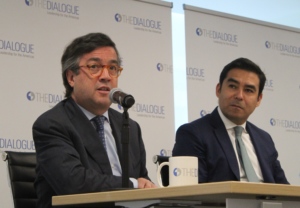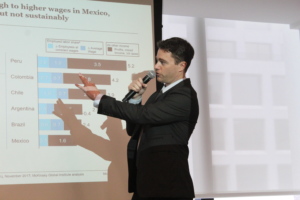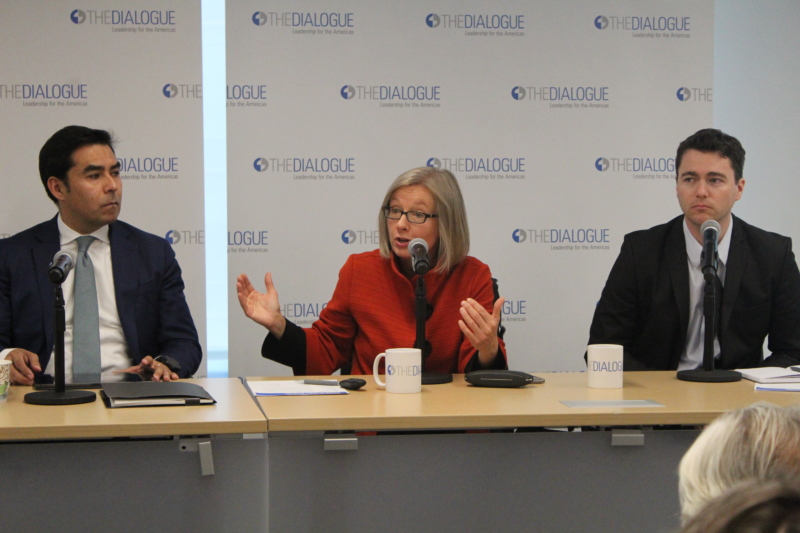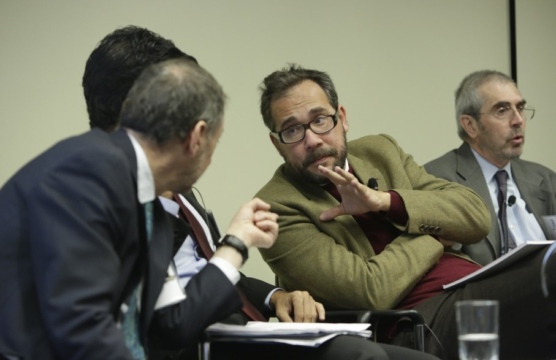Industrial Policy & Innovation in Brazil
Despite an increased presence in the global market, Brazil’s new economic policy shows sign of protectionism and defense of traditional industries.
Latin America is losing ground. Countries in other parts of the world that used to be substantially poorer than the Latin America and Caribbean region are surpassing it in a number of ways.
One big difference has been that, since the 1980s, the region has failed to spur economic growth and expand its middle class. Along with a “missing middle” of upwardly mobile consumers, the region has failed to develop small and mid-sized companies that tend to be more innovative and vibrant than larger ones.
Latin America has also missed out, relative to other markets, on the benefits of the global tech boom at the turn of the century. But with the cusp of a new digital era now approaching, and with talk of the region’s emerging “unicorns,” or tech start-ups that reach a $1-billion market value, can the countries of Latin America and the Caribbean harness the next wave of technology to turn things around, and can they develop a dynamic middle class with a new tier of mid-sized companies to support it?
These questions and others were debated on May 22 when the Inter-American Dialogue hosted the Washington launch of the McKinsey Global Institute’s latest report, “Latin America’s missing middle: Rebooting inclusive growth.”
[caption id="attachment_82915" align="alignleft" width="300"] Luis Alberto Moreno (L), the president of the Inter-American Development Bank, also spoke at the event. // Photo: Sofia Lalinde.[/caption]
Luis Alberto Moreno (L), the president of the Inter-American Development Bank, also spoke at the event. // Photo: Sofia Lalinde.[/caption]
Countries in Latin America and the Caribbean have failed to reactivate their economies since the 1980s, despite a range of policy attempts from governments both right and left, said Jaana Remes, a partner at McKinsey Global Institute. McKinsey’s research suggests that achieving the right balance between the supply side, by creating more mid-sized firms, and the demand side, by boosting the population’s purchasing power, could spark a virtuous cycle that would jumpstart the region’s stagnant economic growth.
Approximately one-third of Latin America’s population today falls into the “middle class” category, defined as people that make more than $10 per day, Luis Alberto Moreno, the president of the Inter-American Development Bank, said at the event. The expansion of Latin America’s middle class has fundamentally changed consumer markets, he said, adding that, the middle class today “consumes more and more, and it’s an engine of growth in a region that wasn’t really a strong consumer market as it is now.”
[caption id="attachment_82927" align="alignright" width="300"] Kevin Russell presented McKinsey's findings. // Photo: Sofia Lalinde.[/caption]
Kevin Russell presented McKinsey's findings. // Photo: Sofia Lalinde.[/caption]
However, the bottom 90 percent of Latin American households consumes just 64 percent of the total, the lowest share in the world, the report shows. The lack of dynamism on the demand side disincentivizes investment and innovation by firms, said Kevin Russell, a fellow at the McKinsey Global Institute who headed the report’s research team. In turn, low investment and innovation on the supply side drags on productivity rates and hampers growth, he added. This also partially explains why Latin American countries have fewer mid-sized firms, as compared to other emerging regions.
“There’s a challenge on the supply side. How do you create more competitive and more mid-sized and large firms?” Russell said. “But you also need to make sure that something on this demand side, something changes, because people are not going to invest without this picture looking different.”
Wages are an important factor to consider in reducing inequality, said Eric Parrado, the chief economist at the Inter-American Development Bank, who also spoke at the event. Since the 1970s, extreme poverty levels fell in most countries of the region, in large part due to nonlabor income such as conditional cash transfer programs. However, in countries such as Mexico, wages have remained low, leading to a small and fragile middle class that’s at risk of falling below the poverty line if economic growth stalls. Focusing on sources of inclusive growth, by investing in infrastructure and boosting total factor productivity, would help expand the middle class and decrease inequality in the region, Parrado said.
Despite an increased presence in the global market, Brazil’s new economic policy shows sign of protectionism and defense of traditional industries.
Why has growth of the region’s middle class slowed down? What needs to be done to maintain the gains of the last decade?
There is a gap between the skills that the Latin American workforce offers and the skills that companies in the region demand.
 Eric Parrado, Jaana Remes and Kevin Russell (L-R) discussed ways to expand the region's middle class. // Photo: Sofia Lalinde.
Eric Parrado, Jaana Remes and Kevin Russell (L-R) discussed ways to expand the region's middle class. // Photo: Sofia Lalinde.

